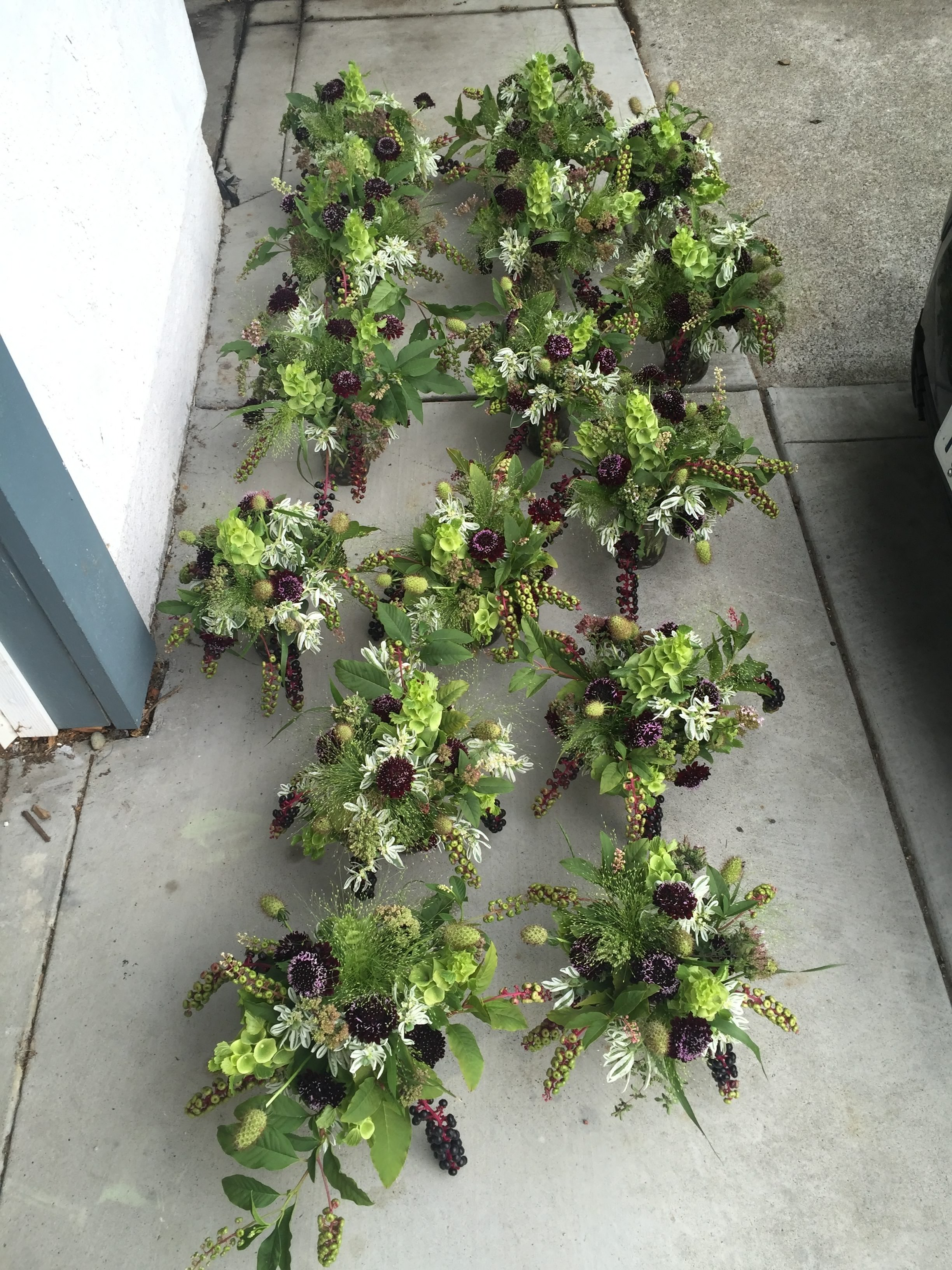

Posted: September 22, 2015
Seth Chapin of Evermore Flowers is a farmer-Florist right here in the Napa Valley. He makes really inspiring, natural creations from the flowers he grows himself, as well as foraging from his backyard, friends’ gardens and even roadside ditches! He has a really unique sensibility when it comes to floral design (think simple but ethereal and impactful!) and we were super excited to talk with him about his philosophy and have him share tips on how to think creatively about making flower arrangements at home. Follow him and his creations on Instagram at @sethkchapin.
Why flowers?
I was initially drawn into growing via the food world. I lived in Costa Rica on a farm for a year surrounded by a really inspiring growing environment and it transformed my life – I knew I wanted to cultivate the soil after that. Over the last 7 years, my focus has shifted from edible food to “soul food.” I love how flowers allow me the opportunity to work the soil and express myself artistically. The duality really pulls me in. As with wine, there are so many variabilities and subtleties with flowers – color, shape, texture, smell. It’s all so engaging.
My work is definitely a hybrid of sorts as I am engaging in both growing and designing. As a farmer-Florist (florist with a capital F), I want to cultivate a smaller growing space that is very intensively, intentionally grown and focus more on designing. I can’t imagine a better place than Napa as far as both growing climate and outlets for design are concerned.
What are some of your favorite, everyday flowers and plants that symbolize this special place that we live in?
I have lived in California for only six years but I am deeply taken by the Mediterranean plant community here. I find the muted, earthy colors of our landscape to be so beautiful. I am particularly drawn to the mint family: oregano, thyme, sage, lemon balm, lavender, and rosemary. They are all drought tolerant, bee-friendly, aromatic, and multi-function. I’m understandably enthused by a plant that I can garnish my food with and use in the vase!
And what about for those people that live in others parts of the country? Any insights or tips?
Well the reason I live in California is because I want to be harvesting ranunculus and Meyer lemons in February while my parents are shoveling the walkway in Vermont. So…my first piece of advice would be to move to California!
Seriously… my number one tip would be to focus on the soil health of your growing space. Feed the soil to feed the plants. I would advise even a backyard grower to take a soil test and get intimate with what their soil is lacking. Creating a balanced, enriched growing medium will help your plants flourish. With healthier plants comes less insect pressure and better vase life for your flowers!
How can people think creatively about making their own arrangements at home without feeling overwhelmed? Do you have some simple tips?
This is a great question because when you think outside of the box you can often have a stronger impact visually and potentially save money! One suggestion would be to look into your backyard. That jasmine could smell great in the vase or how about the huge oak tree – that’s a lot of valuable filler! Also think creatively about vase material, size, shape, and color. Instead of recycling the cool blue gin bottle, throw a garden rose in it. Interesting vessels with a single flower can often times be more impactful than the standard vase with a bunch of stems shoved in it.
What are some of the most interesting/unexpected plants that can be foraged (weeds, trees, etc.?)
Foraging is such a powerful tool in the floral design realm. Pulling from the forest or a drainage ditch provides you with a seasonal and local component in the vase. Queen Anne’s Lace is a weed that grows throughout the United States. It is an incredible plant both in its vibrant fresh/green stage and when it starts to dry up and go to seed it tightens up into a beautiful chalice shape. Cut this one for your vase! I would also recommend utilizing flowering branches in the spring. These can provide color in the vase well before most flowers are blooming in the garden. Peach, almond, dogwood, lilac, forsythia, and flowering quince are some of my favorites.
What ideas can you share about making simple bouquets for the coming entertaining season? Anything unexpected?
One thing I can recommend for Thanksgiving and Christmas is to perhaps think more along the lines of foliage as opposed to flowers. Most areas of the United States have minimal flowers available in November and December, so get yourself some fall leaves for Thanksgiving or pine boughs/sprigs and get festive! Or think ahead during the flower-rich summer months and dry some flowers for your holiday party!